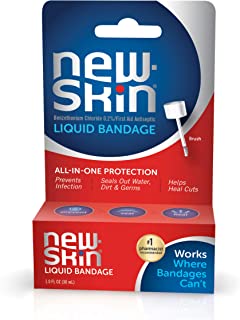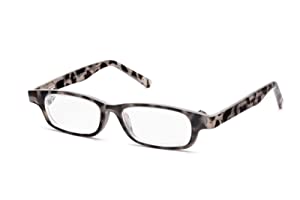Liquid Bandages
Liquid Bandages: The Next Frontier In Wound Care

A liquid bandage is a type of wound dressing that can be applied directly to the skin. It forms a clear, flexible, and waterproof barrier that protects the wound from further harm. Liquid bandages are available over-the-counter and can be used for minor cuts, scrapes, and blisters. Applying a liquid bandage is simple: first, clean the wound with soap and water. Next, apply the bandage according to the instructions on the package.
What are liquid bandages?
Liquid bandages are a type of wound dressing that helps to protect wounds and promote healing. They are made from a variety of materials, including latex, silicone, and acrylic. Liquid bandages can be applied directly to the skin or over another type of dressing. They are typically used for minor cuts and scrapes, but can also be used for more serious wounds.
Liquid bandages can be a convenient and easy way to protect wounds and promote healing.
They are available in a variety of materials, including latex, silicone, and acrylic. Liquid bandages can be applied directly to the skin or over another type of dressing. For minor cuts and scrapes, they can provide an extra layer of protection against infection while promoting healing. For more serious wounds, they can help to keep the wound clean and protected while it heals.
How do liquid bandages work?
A liquid bandage is a type of bandage that is applied in a liquid form and dries to form a protective covering. Liquid bandages can be used on cuts, scrapes, and burns. They are also useful for protecting wounds from infection.
Liquid bandages work by forming a barrier over the wound. This barrier helps to keep out dirt and bacteria. It also helps to keep the wound moist, which can speed up healing. Liquid bandages are easy to apply and remove. They are also less likely to cause irritation than other types of bandages. Most liquid bandages are water based, making them less likely to irritate sensitive skin. They also dry clear, which makes them less noticeable. Liquid bandages usually come in small bottles that are easy to carry with you. Liquid bandages can be used on cuts, scrapes, and burns. They are also useful for treating poison ivy, bug bites, and other skin irritations. Liquid bandages are available over the counter at most drugstores. They can be expensive and should not be used on deep wounds or serious burns.
The benefits of using liquid bandages.
Liquid bandages are a convenient way to protect cuts and scrapes. They are easy to apply and can be used on all skin types. Liquid bandages can also be used to prevent blisters.Liquid bandages provide a barrier against bacteria and dirt. They help to keep the wound clean and free from infection. Liquid bandages are also waterproof, so they can be used when swimming or bathing. Liquid bandages are comfortable to wear and allow the skin to breath. They are flexible and move with the skin, so they won't crack or peel like traditional Band-Aids®. And because liquid bandages don't stick to the skin, they can be worn for days at a time. The downside to using liquid bandages is that they tend to be more expensive than traditional Band-Aids .
The drawbacks of using liquid bandages.
Liquid bandages are a popular alternative to traditional bandages, but they come with some drawbacks. For one, they're not as absorbent as traditional bandages, so they're not ideal for wounds that ooze a lot of fluid. They can also be more difficult to remove, and if they're not removed properly, they can irritate the skin. Finally, liquid bandages can be more expensive than traditional bandages.
How to choose bandages. Bandages come in a variety of sizes and shapes, and there are many different types to choose from. Bandages are usually made of cotton, plastic or rubber; some have adhesive strips on the back that make them easier to apply. Some have a sticky coating that promotes faster healing and reduces the risk of infection. While bandages usually come in sterile packages, you should always check the package to make sure they're sterile before using them. If you don't have time to do that, at least wash your hands before handling them.
Are liquid bandages right for you?
Do you have a wound that is difficult to keep covered? Are you looking for a more convenient way to cover your wound? If so, you may be wondering if a liquid bandage is right for you. A liquid bandage is a clear, water-based dressing that can be used on wounds of all types. It forms a barrier over the wound, protecting it from bacteria and other contaminants. Liquid bandages are also breathable, which helps promote healing.
If you are considering using a liquid bandage, it is important to speak with your doctor first. This is because some wounds should not be covered with a dressing of any kind. Once your doctor has given you the okay, however, using a liquid bandage can be an easy and effective way to protect your wound.
If you have a cut or scrape, you may reach for a traditional bandage. But you might also consider using a liquid bandage. These products can be helpful in certain situations. But they also have some
disadvantages. Liquid bandages are made of ingredients that include latex, acrylics, and resins. They form a flexible, waterproof barrier over your wound. Many products claim to help heal cuts and scrapes faster than a standard bandage.
Liquid bandages can be convenient. They come in a small bottle that you can carry with you. And you don't need scissors to apply them. But there are some drawbacks to using these products. For one thing, they're more expensive than standard bandages. Also, it can be challenging to apply a liquid bandage evenly over a wound.
In conclusion, liquid bandages are a versatile and easy-to-use product that can be used for a variety of purposes. They are an affordable and convenient option for those who want to protect their wounds from infection and promote healing. Liquid bandages can also be used to protect cuts and scrapes from dirt and debris.



